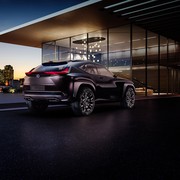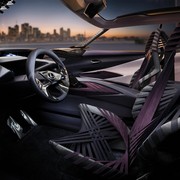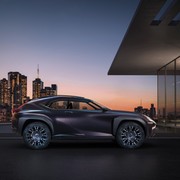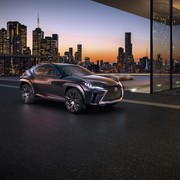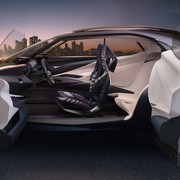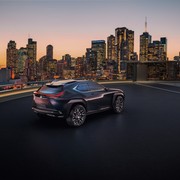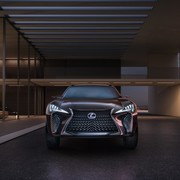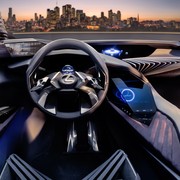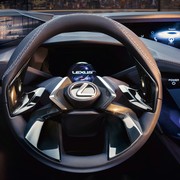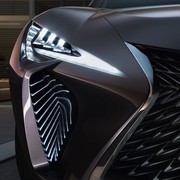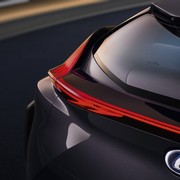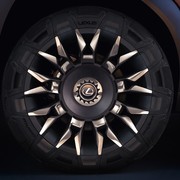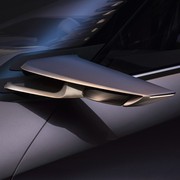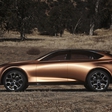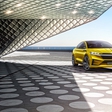
At the 2016 Paris motor show, the compact crossover concept vehicle, the UX Concept, made its world debut, which is - despite its rougher lines - still aimed at driving in urban environment.
Designed by ED 2 , Lexus' design centre in the South of France, Lexus wishes to cater the needs of younger, ever-connected urban drivers and well situated buyers who desire a highly functional car for urban driving.
UX boasts a very rough, aggressive body shape, as seen in dynamic lines, flowing from the grille past the front lights and the sides of the body to the tail lights. The roof moves up in a steep slope, as if it were fastened into the rear of the car, and then slowly descends towards the A pillar structure. Its urban nature – instead of an off-road one – and dynamics are hinted at with a low ground clearance and a coupe-like low driving position. According to Lexus, the 'inside-out' styling theme is further emphasised by the wheel arches, roof bars and door cameras. A prominent shape-defining grille, the length of the bonnet with leaning A pillars and the use of polycarbonate fins attached to an aluminium member all emphasize the profile of a classic sports car.
What really stands out inside the car is Lexus' new seat technology, the Kinetic Seat Concept. The front side of the cabin features darker tones, expressing luxury, while in the back side, there is a comfortable bench in alluring lighter shades. The four seats are ergonomically placed to reflect the three-dimensional look, while the ''inside-out'' prinicple pours through numerous exterior and interior details throughout the vehicle, and is most strongly represented by an X-shaped movement in the architecture from the cabin outwards and vice-versa.
The second key design principle of the new Lexus UX Concept is 'Deconstruction', which is best represented in the front of the cabin where, in place of a conventional dashboard, sharp, angular forms overlap and flow past each other to create a strong interplay of shadows and contrasts, making it difficult to identify where they begin or end. Within this unique, deconstructed interior, a strong 'Seat in Control' principle remains a Lexus brand signature, emphasizing the dominant role of the driver as opposed to the role of the passengers. The highly three-dimensional feel of the instrumentation (of the driving environment and all the infotainment tools) is a further example of deconstruction techniques used in the UX Concept that wishes to offer all the drivers that are used to connected lifestyle and work environment, a chance at experiencing a three-dimensional driving experience.
Since this is a concept design, not many information was given about the powertrain. We can only assume the Lexus UX – if it ever comes to life as a production model – will feature a plugin-hybrid powertrain, if not a fully electric one.
